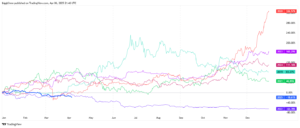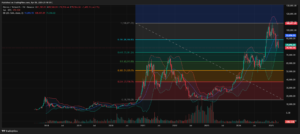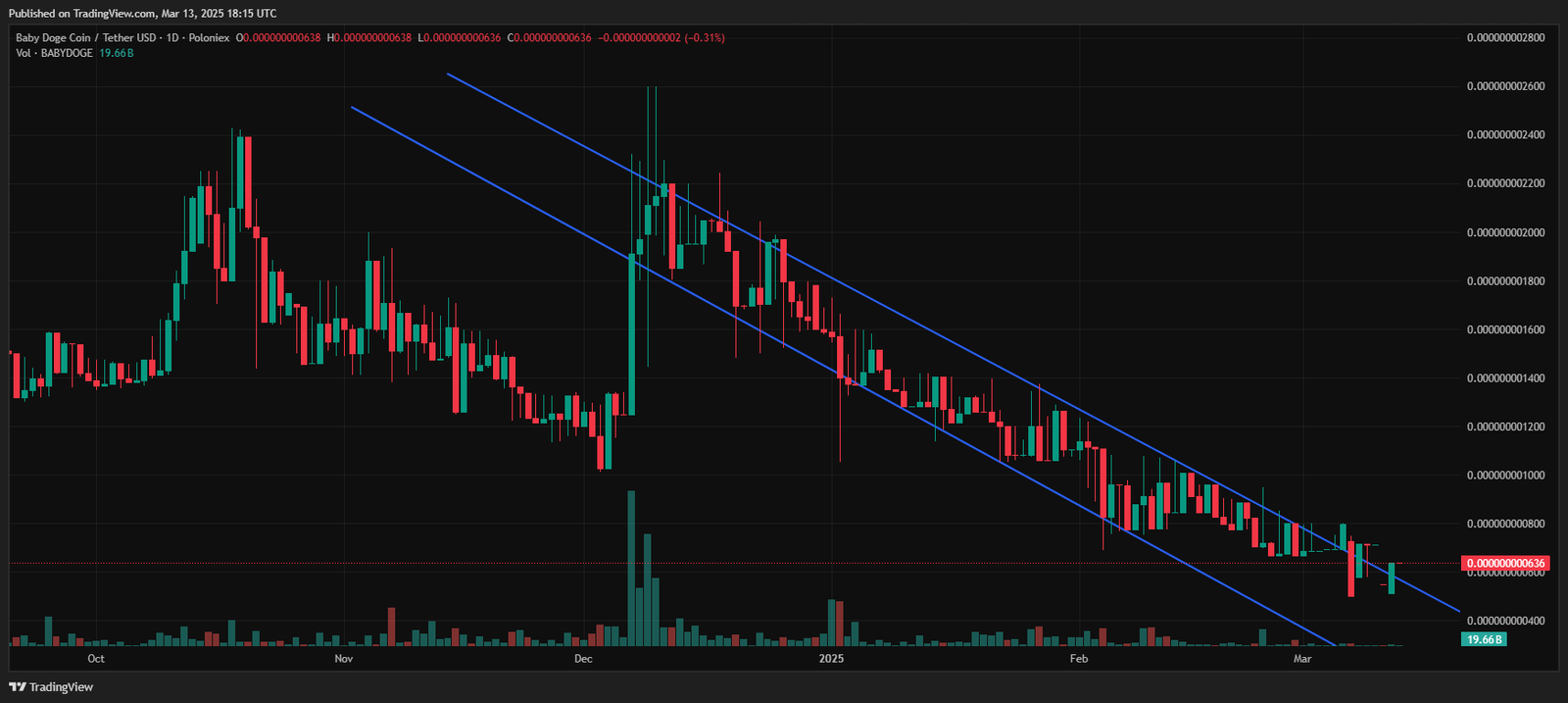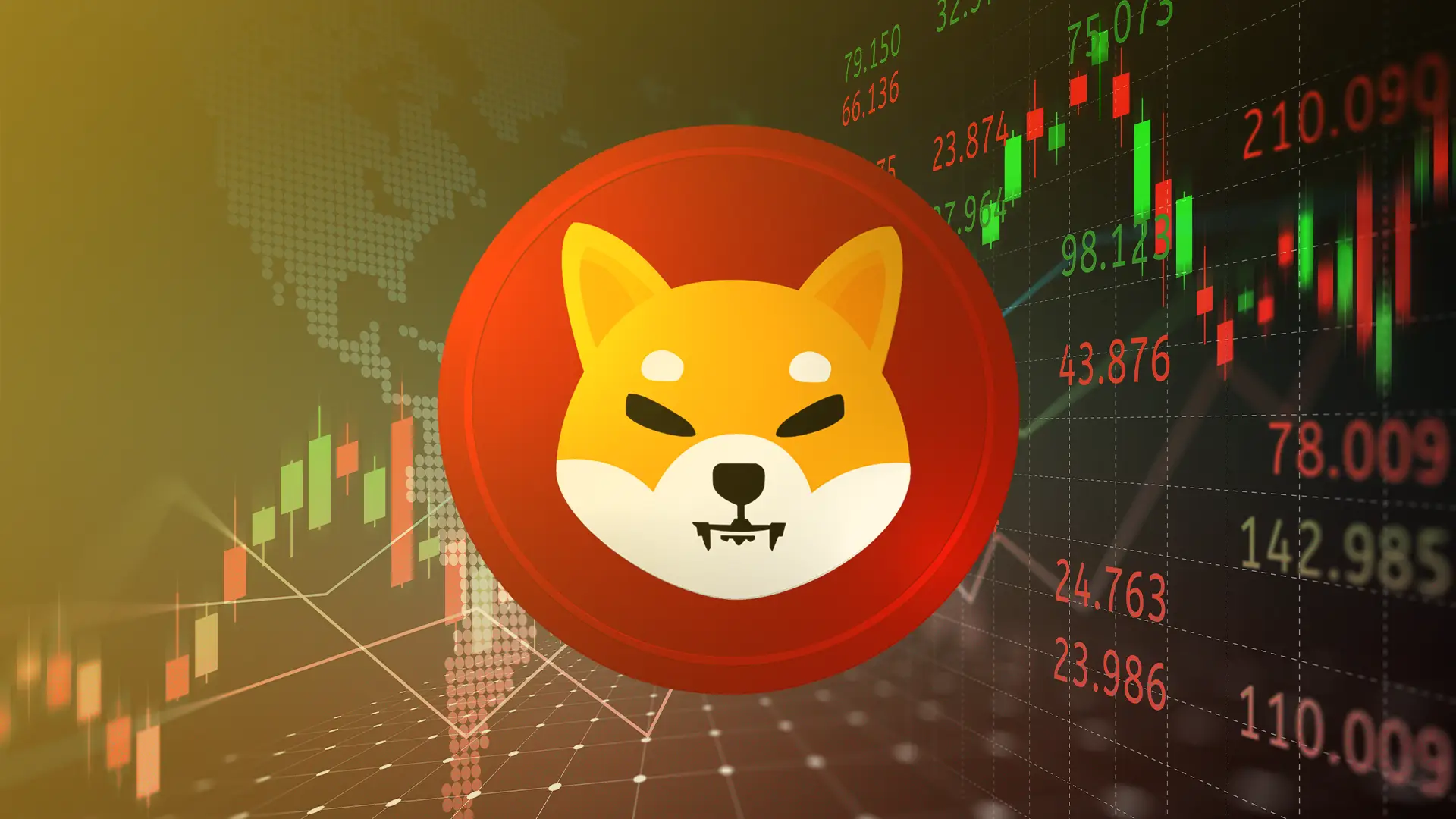The cryptocurrency market has always been known for its dizzying highs and gut-wrenching lows. Just last year, Bitcoin smashed through its all-time highs, only to experience a dramatic and sharp decline soon after. As seasoned investors know, these extreme fluctuations are not random; they follow a cyclical pattern. In this post, we will explore why the convergence of current macroeconomic pressures such as tariffs, high interest rates, market uncertainty, and well-established seasonal trends suggests that a crypto winter may be closer than most expect. We will examine Bitcoin’s peak and its aftermath, discuss the seasonal nature of crypto cycles, and analyze how various headwinds are accelerating a market downturn.
Thesis Statement
Today, several key macroeconomic pressures are converging to signal that a crypto winter is imminent. With tariffs disrupting global trade, central banks enforcing high interest rates to combat inflation, ongoing market uncertainty, and historical seasonal trends, the current landscape points toward a prolonged downturn.
This article will explain why these factors, combined with shifting investor sentiment and technical signals, indicate that the crypto winter may be closer than you think.
Bitcoin’s Peak and Its Aftermath
Recap of Recent History
Bitcoin’s explosive rise to all-time highs last year was the talk of the town. News headlines celebrated its record-setting price, and the asset was hailed as digital gold. However, shortly after reaching its pinnacle, Bitcoin experienced a dramatic price drop. This decline was not an isolated incident; it sent shockwaves across the entire crypto market.
The sharp fall shook investor confidence. Many traders who had jumped on the bandwagon during the bull run were caught off guard, and the ensuing sell-off increased market volatility.
The sudden downturn highlighted a key truth about the crypto market: no matter how high prices soar, the cycle always brings a period of correction—a correction that, in this case, has begun to mirror the early stages of a crypto winter.
Investor Reaction
Investor sentiment is a powerful force in any market. The sudden decline in Bitcoin’s price led to widespread panic, triggering a wave of emotional selling. Panic selling, driven by fear and uncertainty, resulted in steep declines not only for Bitcoin but for many altcoins as well.
Volatility spiked, and even long-term investors began to reassess their positions. This shift in sentiment has created a self-reinforcing cycle: as prices drop, fear increases, leading to more selling, which in turn drives prices even lower.
Many institutional investors, who typically prefer stability, started to withdraw their capital. Meanwhile, retail investors became gripped by the fear of further losses. The market’s reaction to Bitcoin’s peak and subsequent decline is a stark reminder of how quickly sentiment can shift from exuberance to panic, setting off a chain reaction that accelerates the downturn.
The Seasonal Nature of Crypto Markets

Understanding Crypto Cycles
The cryptocurrency market, like any financial market, moves in cycles. These cycles include:
- Bull Markets: Extended periods when asset prices rise, driven by optimism and increased buying.
- Bear Markets: Extended periods when prices fall, often accompanied by fear, pessimism, and selling pressure.
- Crypto Winter: A prolonged bear market specific to cryptocurrencies, characterized by significant price drops and subdued market activity.
Historical examples clearly illustrate these cycles. For instance, the 2018 crash—often referred to as the “crypto winter”—saw Bitcoin’s price plummet from nearly $20,000 to below $4,000, and the 2022 downturn further underscored the cyclical nature of crypto markets. These historical events serve as a reminder that every bull run is eventually followed by a period of correction.
Repetition of Patterns
Seasonal trends have consistently shaped the crypto market. Over the years, investors have observed that after a period of exuberant growth, the market naturally cools down. This is not merely coincidental; it is a reflection of underlying market dynamics, investor psychology, and external economic factors.
For example, past crypto winters have often coincided with times of increased macroeconomic uncertainty and regulatory crackdowns. Seasonal patterns such as the end of the calendar year, when many investors reallocate their portfolios, also contribute to these downturns. Given that the current economic environment mirrors many of the conditions seen during previous crypto winters, it is reasonable to expect that the current cycle may follow suit.
Macroeconomic Headwinds Accelerating the Downturn
The current economic climate is marked by several factors that are putting additional pressure on the crypto market. These include tariffs, high interest rates, inflation pressures, and regulatory uncertainties.
A. Tariffs and Global Trade Tensions
Recent Tariff Announcements
In recent months, the U.S. government has implemented a series of aggressive tariffs aimed at correcting trade imbalances. These tariffs target key sectors and are designed to encourage domestic production while discouraging imports. However, the intended effects on trade balances come at a high cost.
Market Impact
Tariffs create significant uncertainty in global markets. They increase costs for businesses, reduce global liquidity, and ultimately force riskier assets, such as cryptocurrencies, to suffer. With higher costs imposed on imported goods, companies face rising operational expenses.
This cost pressure is passed on to consumers, contributing to inflation and dampening overall economic growth. For the crypto market, which thrives on speculative investments, the increased uncertainty and reduced liquidity can trigger rapid sell-offs and exacerbate volatility.
High Interest Rates and Tightening Monetary Policy
Rising Borrowing Costs
Central banks around the world, including the U.S. Federal Reserve, have been raising interest rates to combat soaring inflation. These high rates increase the cost of borrowing, making it more expensive for businesses and investors to access capital. The higher financing costs result in reduced investment in riskier assets, such as cryptocurrencies.
Effect on Risk Assets
The current high interest rate environment discourages speculative investments. With fewer dollars available for high-risk ventures, investors are more likely to seek safer, income-generating assets. This shift in capital allocation adversely affects the crypto market, where a significant portion of trading is driven by speculative behavior. The result is reduced demand for cryptocurrencies, leading to further price declines.
Inflation Pressures and Reduced Dollar Liquidity
Inflation Dynamics
Tariffs and high interest rates have a direct impact on inflation. As tariffs push up the cost of imported goods, inflation rises, eroding the purchasing power of the dollar. In response, central banks may implement monetary easing measures, such as quantitative easing (QE), to stabilize the economy. However, these measures can lead to an oversupply of dollars, further weakening the currency.
Investor Behavior
When inflation accelerates and the dollar weakens, investors face a dilemma. On one hand, they may sell off risky assets in fear of further devaluation. On the other hand, some investors may eventually turn to assets that are considered safe havens, such as Bitcoin. This paradoxical behavior—short-term selling driven by inflation fears, followed by a long-term search for safe-haven assets—creates additional instability in the crypto market.
Regulatory and Geopolitical Uncertainty
Uncertain Regulatory Landscape
Regulatory scrutiny has intensified as governments seek to bring more oversight to the crypto space. New regulations, policy shifts, and even outright bans in certain jurisdictions contribute to an environment of uncertainty. Investors are hesitant to commit capital when the rules of the game are in flux, and this regulatory uncertainty weighs heavily on market sentiment.
Geopolitical Risks
Geopolitical tensions, including trade wars and political conflicts, add another layer of complexity to the market. For instance, ongoing disputes between major trading nations and retaliatory tariff measures can lead to sudden shifts in market dynamics. These geopolitical risks further erode investor confidence and contribute to the overall sense of uncertainty in the crypto market.
Market Sentiment and Behavioral Finance
Sentiment Indicators
Investor sentiment is a critical component of market dynamics. Tools such as the Fear & Greed Index, on-chain data, and trading volume metrics provide valuable insights into the prevailing mood of the market. When these indicators show extreme fear, they often signal that a downturn is either underway or imminent.
Investor Psychology
Investor behavior in crypto markets is largely driven by emotion. Panic selling, fueled by fear, uncertainty, and doubt (FUD), can trigger sharp declines. Herd behavior exacerbates these declines, as investors rush to exit their positions in a bid to avoid losses. This behavior is further magnified by media coverage and social media chatter, which can sway market sentiment rapidly.
Correlation with Traditional Markets
Interestingly, cryptocurrencies often exhibit a strong correlation with traditional risk assets like tech stocks. When stock markets face volatility—due to high interest rates or geopolitical tensions—cryptocurrencies tend to follow suit. This correlation underscores the fact that even though crypto is often touted as a separate asset class, it is not immune to broader economic trends and investor sentiment.
Technical and Seasonal Analysis Pointing to a Crypto Winter

Chart Patterns and Trends
Technical analysis provides clear signals about the state of the market. Key indicators such as moving averages, Relative Strength Index (RSI), and support/resistance levels can help identify when a market is transitioning from a bull phase to a bear phase.
Currently, many technical indicators suggest that the market is showing signs of weakness. For example, Bitcoin has recently broken below its 200-day moving average—a classic signal of a bearish trend.
Seasonal Expectations
Historically, the crypto market has followed a predictable seasonal pattern. After periods of rapid growth, the market typically enters a phase of consolidation and decline—a crypto winter.
Past instances, such as the 2018 crash and the 2022 downturn, illustrate how seasonal factors play a significant role in market cycles. Given that we are now observing similar technical signals and seasonal trends, it is reasonable to expect that the market may be on the cusp of a prolonged downturn.
The Timing Question
Determining the precise timing of a crypto winter is challenging. However, historical patterns and current technical indicators suggest that the downturn could be both deep and prolonged.
Given today’s date—April 6, 2025—and the current market signals, some experts predict that the crypto winter could extend for several more months before a recovery begins. The combination of ongoing macroeconomic pressures and seasonal trends provides a compelling case for a near-term extended bear market.
Expert Forecasts and Opinions
Synthesizing Expert Views
Recent opinions from leading crypto analysts and thought leaders further reinforce the argument for an imminent crypto winter. Many experts agree that the current macroeconomic environment—marked by high tariffs, soaring interest rates, and persistent inflation—will continue to weigh on the market for the foreseeable future.
Some experts have pointed to recent statements by prominent figures in the crypto space, who have warned that the market is not yet ready for a sustained recovery. They highlight that until regulatory uncertainties are resolved and the macroeconomic environment stabilizes, investors should expect continued volatility.

Predictive Outlook: When Is the Next Crypto Winter?
Based on a combination of fundamental and technical analysis, several forecasts suggest that the crypto winter could intensify in the coming months. Current technical indicators, including a breakdown of key support levels and declining trading volumes, point toward an extended bearish phase. With today being April 6, 2025, many experts predict that the market could remain in a bearish state well into the summer of 2025, possibly extending until the fourth quarter.
For example, some analysts project that Bitcoin may test new lows around the $60,000 mark before any significant recovery begins. Others anticipate that the combined effects of tariffs, high interest rates, and continued investor pessimism could keep the market depressed until macroeconomic conditions show clear signs of improvement.
Predictive dates vary, but a common theme is that if current trends persist, the crypto winter may last at least until the end of 2025. Investors should prepare for a prolonged period of lower prices and heightened volatility.
Implications for Investors
Risks and Opportunities
While the prospect of a crypto winter can be daunting, it also presents significant opportunities for disciplined, long-term investors. Bear markets often force the market to purge weak projects and unsustainable speculation, leaving behind assets with strong fundamentals. For investors with a long-term view, this can be an excellent time to accumulate quality assets at discounted prices.
However, the risks are real. The same factors that contribute to a prolonged downturn—such as macroeconomic instability and regulatory uncertainty—can lead to substantial losses if not managed properly. Investors must be cautious, avoid panic selling, and adopt strategies that help mitigate risk.
Strategies for Survival
Investors should consider several key strategies to navigate a crypto winter successfully:
Diversification
One of the most important principles of risk management is diversification. By spreading investments across multiple asset classes—including both cryptocurrencies and more traditional assets—investors can reduce their overall risk exposure. This approach can help cushion the impact of a prolonged downturn in the crypto market.
Dollar-Cost Averaging (DCA)
Dollar-cost averaging involves investing a fixed amount of money at regular intervals, regardless of market conditions. This strategy helps reduce the impact of market volatility by averaging the cost of investments over time. During a crypto winter, DCA can be particularly effective, as it allows investors to gradually build positions without trying to time the market perfectly.
Using Stop-Loss Orders
Stop-loss orders are an essential tool for protecting investments during periods of high volatility. By setting stop-loss orders at predetermined levels, investors can automatically sell assets if prices fall too far, thereby limiting potential losses. This strategy is especially useful in a bear market when panic selling can lead to precipitous declines.
Long-Term Perspective
It is important to remember that market cycles are inevitable. While a crypto winter may be painful in the short term, history shows that these downturns eventually pave the way for new bull markets. Long-term investors who maintain a disciplined approach and avoid reacting impulsively to short-term market fluctuations are more likely to emerge stronger when the market eventually recovers.
Investors should also be mindful of the fact that a crypto winter, despite its challenges, can create the foundation for future growth. The period of consolidation allows the market to reset and eliminates unsustainable speculation, thereby preparing the ground for a more robust recovery in the next bull phase.
Final Thoughts
The cryptocurrency market is no stranger to volatility, and its cyclical nature is well documented. Bitcoin’s previous highs and subsequent crashes have taught us that every bull market is eventually followed by a bear market—or what many in the industry refer to as a crypto winter. Today’s macroeconomic pressures, driven by aggressive tariffs, high interest rates, inflation fears, and an uncertain regulatory landscape, create a perfect storm that suggests the downturn may be deeper and more prolonged than many expect.
For long-term investors, this period can be both a challenge and an opportunity. The key is to remain disciplined, adopt robust risk management strategies, and maintain a long-term perspective. History has shown that market cycles are inevitable. What seems like a period of despair today could very well be the foundation for a stronger, more resilient market tomorrow.
As we navigate these turbulent times, remember that the market is cyclical. By understanding the forces at play and preparing accordingly, you can not only protect your investments during the crypto winter but also position yourself to take advantage of the inevitable rebound when the market recovers.
Stay informed, remain patient, and use the tools and strategies outlined in this post to guide your decisions. The crypto winter may be closer than you think, but with a thoughtful approach, it can also be the precursor to a new era of growth and innovation in the cryptocurrency space.
Disclaimer: This article is intended for informational purposes only and should not be taken as financial advice. Always conduct your own research or consult a professional before making any investment decisions.




